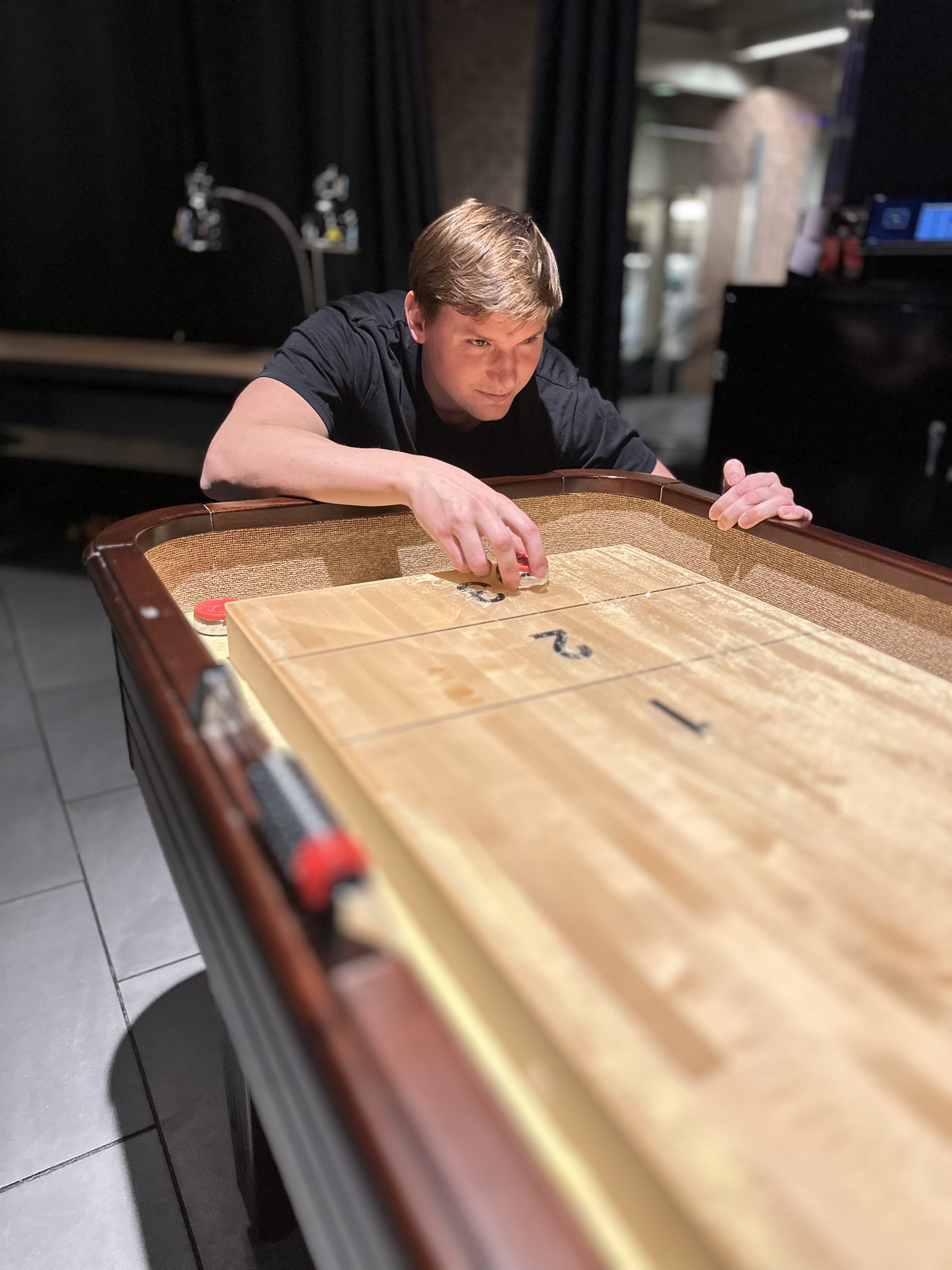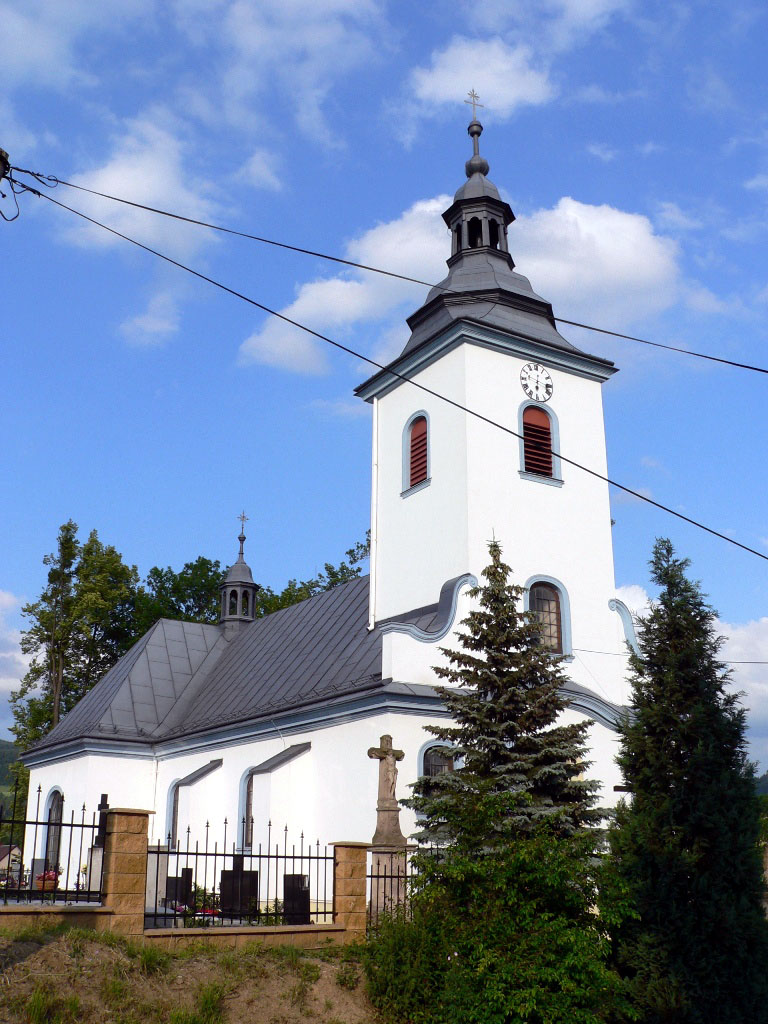|
Sjoelen
''Sjoelen'' is a traditional table shuffleboard game originating in the Netherlands. The game is played on a long, narrow, tabletop board called a ''sjoelbak'', which has four slots or gates through which players attempt to slide thirty discs (also called pucks or stones) in three sub-turns. The game has similarities with bagatelle, curling and shove ha'penny... Since 1977, ''sjoelen'' has been a competitive sport (also known as ''sjoelsport''), driven by the Algemene Nederlandse Sjoelbond (ANS). The ''Sjoelbak'' A ''sjoelbak'' (plural: ''sjoelbakken'') is typically 2m long, approximately 40 cm wide and has sides that are between 5.5 cm and 6.5 cm tall, depending on the model. One end is open, for the player to slide the discs, and has a bar joining the top of the side pieces to denote the start line of the playing area. At the other end, there is a gate line with four slots through which players attempt to slide the discs. The slots are numbered (from left to r ... [...More Info...] [...Related Items...] OR: [Wikipedia] [Google] [Baidu] |
Table Shuffleboard
Table shuffleboard (also known as American shuffleboard, indoor shuffleboard, slingers, shufflepuck, and quoits, sandy table) is a game in which players push metal-and-plastic weighted Puck (sports), pucks (also called ''weights'' or ''quoits'') down a long and smooth wooden table into a scoring area at the opposite end of the table. Shooting is performed with the hand directly, as opposed to deck shuffleboard's use of cue sticks. Tables Shuffleboard tables vary in length, usually within a , and are at least wide. Tables are intended to be kept flat, but any given table may have its own slight concave or convex condition, adding an extra challenge. In order to decrease friction, the table is periodically sprinkled liberally with tiny, salt-like beads of silicone (often referred to as ''shuffleboard wax'' even though silicone is not a wax, or sometimes as ''shuffleboard sand'', or ''shuffleboard cheese'', due to its visual similarity to grated cheese). These beads act li ... [...More Info...] [...Related Items...] OR: [Wikipedia] [Google] [Baidu] |
Sjoelbak
Table shuffleboard (also known as American shuffleboard, indoor shuffleboard, slingers, shufflepuck, and quoits, sandy table) is a game in which players push metal-and-plastic weighted pucks (also called ''weights'' or ''quoits'') down a long and smooth wooden table into a scoring area at the opposite end of the table. Shooting is performed with the hand directly, as opposed to deck shuffleboard's use of cue sticks. Tables Shuffleboard tables vary in length, usually within a , and are at least wide. Tables are intended to be kept flat, but any given table may have its own slight concave or convex condition, adding an extra challenge. In order to decrease friction, the table is periodically sprinkled liberally with tiny, salt-like beads of silicone (often referred to as ''shuffleboard wax'' even though silicone is not a wax, or sometimes as ''shuffleboard sand'', or ''shuffleboard cheese'', due to its visual similarity to grated cheese). These beads act like ball beari ... [...More Info...] [...Related Items...] OR: [Wikipedia] [Google] [Baidu] |
Table Shuffleboard
Table shuffleboard (also known as American shuffleboard, indoor shuffleboard, slingers, shufflepuck, and quoits, sandy table) is a game in which players push metal-and-plastic weighted Puck (sports), pucks (also called ''weights'' or ''quoits'') down a long and smooth wooden table into a scoring area at the opposite end of the table. Shooting is performed with the hand directly, as opposed to deck shuffleboard's use of cue sticks. Tables Shuffleboard tables vary in length, usually within a , and are at least wide. Tables are intended to be kept flat, but any given table may have its own slight concave or convex condition, adding an extra challenge. In order to decrease friction, the table is periodically sprinkled liberally with tiny, salt-like beads of silicone (often referred to as ''shuffleboard wax'' even though silicone is not a wax, or sometimes as ''shuffleboard sand'', or ''shuffleboard cheese'', due to its visual similarity to grated cheese). These beads act li ... [...More Info...] [...Related Items...] OR: [Wikipedia] [Google] [Baidu] |
Curling
Curling is a sport in which players slide #Curling stone, stones on a sheet of ice toward a target area that is segmented into four concentric circles. It is related to bowls, boules, and shuffleboard. Two teams, each with four players, take turns sliding heavy, polished granite stones, also called ''rocks'', across the ice ''curling sheet'' toward the ''house'', a circular target marked on the ice. Each team has eight stones, with each player throwing two. The goal is to accumulate the highest score for a ''game''; points are scored for the stones resting closest to the centre of the house at the conclusion of each ''end'', which is completed when both teams have thrown all of their stones once. A game usually consists of eight or ten ends. Players induce a curved path, described as ''curl'', by causing the stone to slowly rotate as it slides. The path of the rock may be further influenced by two sweepers with brooms or brushes, who accompany it as it slides down the sheet and ... [...More Info...] [...Related Items...] OR: [Wikipedia] [Google] [Baidu] |
Showdown (sport)
Showdown is a sport for the blind and visually impaired which could be described as the blind community's answer to air hockey, or table tennis. It is growing very quickly around the world. It is also played by sighted players, but they are not allowed to participate in the International Blind Sports Federation (IBSA) tournaments. Showdown is widely spread in Europe, but it is also played in Africa, Asia, North America, and South America. After the success of Showdown at the 1996 Atlanta Paralympics, representatives from more than thirty countries contacted the International Blind Sports Federation Showdown Subcommittee. They wanted information about equipment, blueprints, and rules so they could play this game in their country. Currently, the IBSA Showdown Sub-committee is encouraging regional and national Showdown Tournaments in an effort to have international championships which, hopefully, will lead to sanctioning by the Paralympics. Equipment The sport is comparatively in ... [...More Info...] [...Related Items...] OR: [Wikipedia] [Google] [Baidu] |
Beneden-Leeuwen
Beneden-Leeuwen is a town in the Dutch province of Gelderland. It is a part of the municipality of West Maas en Waal, and lies about 7 km east of Tiel, on the opposite (southern) bank of the river Waal. Beneden-Leeuwen has 6,925 inhabitants on 1 July 2021. It is the Catholic part of the former village Leeuwen. History It was first called Beneden-Leeuwen in 1986 to distinguish from Boven-Leeuwen. Leeuwen was first attested in the 12th century as Lewen, and means "settlement near burial hill". The village developed along the Waal. In 1898, a Catholic church was built in Beneden-Leeuwen, and the village split in a Catholic (beneden) and a Protestant (boven) village. The St. Alphonsus de Liguori Church was built between 1898 and 1900. In 1840, the entire village of Leeuwen was home to 2,128 people. Windmill De Wielewaal is a grist mill built in 1857. Notable people * Hanneke Hoefnagel (born 1988), gymnast * Jona Lendering Jona Lendering (born 29 October 1964) is a Dut ... [...More Info...] [...Related Items...] OR: [Wikipedia] [Google] [Baidu] |
Lampertheim, Bas-Rhin
Lampertheim () is a commune of the Bas-Rhin department in Grand Est in north-eastern France. The town shares a large shopping centre () with the neighbouring communes of Mundolsheim und Vendenheim. Population People Léo Schnug, artist and painter, was born at Lampertheim in 1878. He would die at Brumath-Stephansfeld on 15 December 1933; his body being returned to Lampertheim where his grave can be visited in the town cemetery. See also * Communes of the Bas-Rhin department The following is a list of the 514 communes of the Bas-Rhin department of France. The communes cooperate in the following intercommunalities (as of 2025):Communes of Bas-Rhin [...More Info...] [...Related Items...] OR: [Wikipedia] [Google] [Baidu] |
Vendryně
Vendryně () is a municipality and village in Frýdek-Místek District in the Moravian-Silesian Region of the Czech Republic. It has about 4,500 inhabitants. It lies in the historical region of Cieszyn Silesia on the banks of the Olza River. The municipality has a significant Polish minority. Etymology The name of Vendryně is of topographic origins derived from the toponymic base ''*vądr-'' tentatively connected with water. Geography Vendryně is located about east of Frýdek-Místek and southeast of Ostrava. It lies in the historical region of Cieszyn Silesia. It forms a conurbation with neighbouring Třinec, and is separated from Třinec by the river Olza, which flows along the western border of the municipal territory and intersects it at the narrowest point. Vendryně lies mostly in the Moravian-Silesian Foothills, but its elongated territory also extends into the Silesian Beskids on the north and into the Moravian-Silesian Beskids on the south. The southern part al ... [...More Info...] [...Related Items...] OR: [Wikipedia] [Google] [Baidu] |
Lisse
Lisse () is a town and Municipalities of the Netherlands, municipality in the Provinces of the Netherlands, province of South Holland in the Western Netherlands. The municipality, which lies within the Duin- en Bollenstreek, covers an area of of which is water. Its population was in . Located within the municipal boundary is also the community De Engel (Lisse), De Engel. History Early history The history of Lisse is closely related and similar to the neighboring towns of Hillegom and Sassenheim. Based on a document from 1198 which makes official mention of the town's name, Lisse celebrated its 800-year anniversary in 1998, although there is an indication that there was already a settlement there in the 10th century. In the Middle Ages, Lisse was a small settlement; there were only 50 houses in 1500. Because of prolonged warfare (particularly the wars of Charles I, Duke of Burgundy, Charles the Bold and the Eighty Years' War), poverty was prevalent. Its population lived from a ... [...More Info...] [...Related Items...] OR: [Wikipedia] [Google] [Baidu] |






